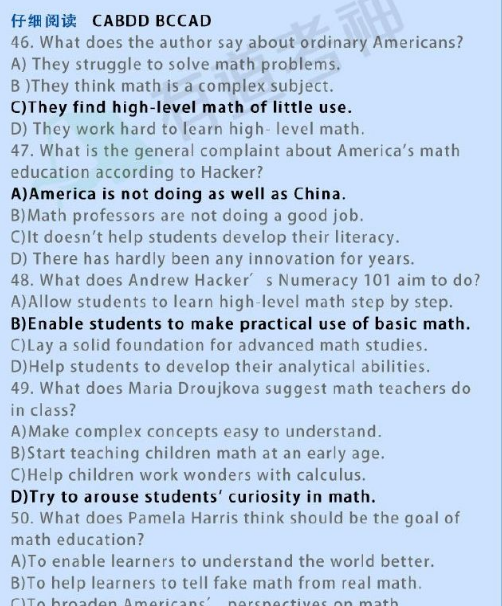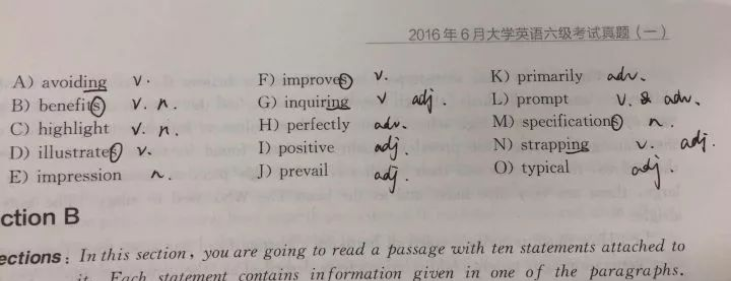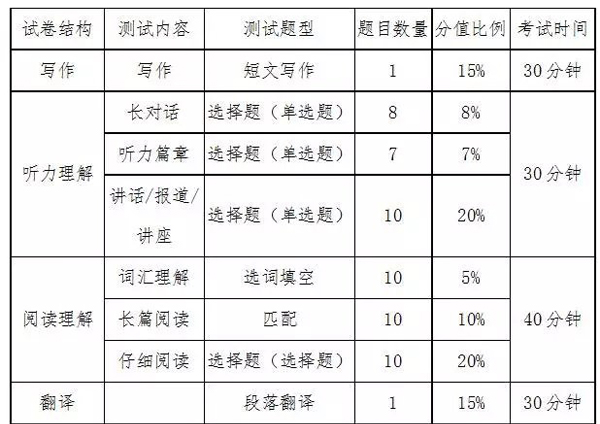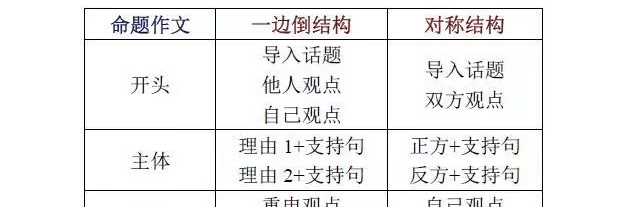2006年英语专业四级模拟考试试题
|
TEST FOR ENGLISH MAJORS —GRADE FOUR— TIME LIMIT: 130 MIN. PART I DICTATION [15MIN.] Listen to the following passage. Altogether the passage will be read to you four times. During the first reading, which will be read at normal speed, listen and try to understand the meaning. For the second and third readings, the passage will be read sentence by sentence, or phrase by phrase, with intervals of 15 seconds. The last reading will be read at normal speed again and during this time you should check your work. You will then be given 2 minutes to check through your work once more.. Please write the whole passage on ANSWER SHEET ONE. PART II LISTENING COMPREHENSION [15MIN.] (略) In Sections A, B and C you will hear everything ONCE ONLY. Listen carefully and then answer the questions that follow. Mark the correct answer to each question on your answer sheet. SECTION A CONVERSATIONS In this section you will hear several conversations. Listen to the conversations carefully and then answer the questions that follow. SECTION B PASSAGES In this section, you will hear several passages. Listen to the passages carefully and then answer the questions that follow. SECTION C NEWS BROAOCAST In this section, you will hear several news items. Listen to them carefully and then answer the questions that follow. PART III CLOZE [15 MIN.] Decide which of the choices given below would best complete the passage if inserted in the corresponding blanks. Mark the best choice for each blank on your answer sheet. Interpersonal communication is your __________(1) interaction with others. Talking to a friend on campus, chatting to a friend on campus, chatting on the phone with a classmate about an __________(2) test, arguing the___________________(3) of a movie with friends, discussing strategies for accomplishing tasks __________(4), interviewing for a job, and planning the future __________(5) a loved one are all forms of interpersonal communication. Effective interpersonal communication ___________(6) our sensitivity to others and to the situation. One goal of effective interpersonal communication is to maintain relationships, and forming __________(7) messages that accurately convey our ideas and feelings __________(8) not offending the other person is key __________(9) our success. Effective interpersonal communication ___________(10) us. People who can clearly express their ideas, beliefs, and opinions become influential and ___________(11) control over what happens to them and to others that they __________(12). When we accurately and precisely __________(13) our thoughts, others gain a better __________(14) for our position. Their understanding and appreciation make it more likely that they will respond in __________(15) that are consistent with our needs. Effective interpersonal communication helps us manage the __________(16) we create. Presenting ourselves in such a way that others will______________(17) and trust us is important in both public and private __________(18)—whether we’re communicating in a professional setting, __________(19) our interpersonal skills are vital to getting a job, holding a position, or rising in an organization, or in a private setting where we’re trying to __________(20) and maintain relationships. 31. [A] familiar [B] informal [C] intimate [D] close 32. [A] upcoming [B] final [C] mid-term [D] intermediate 33. [A] advances [B] strength [C] population [D] fondness 34. [A] at work [B] in work [C] under work [D] over work 35. [A] for [B] with [C] over [D] to 36. [A] describes [B] conveys [C] portrays [D] betrays 37. [A] sound [B] directory [C] diction [D] verbal 38. [A] if [B] when [C] while [D] as 39. [A] to [B] of [C] for [D] in 40. [A] empowers [B] reinforces [C] supports [D] sustains 41. [A] exhaust [B] exert [C] affect [D] enact 42. [A] care about [B] care for [C] care with [D] take to 43. [A] interpret [B] decipher [C] encode [D] decode 44. [A] assessment [B] evaluation [C] appreciation [D] appraisal 45. [A] approaches [B] methods [C] ways [D] ends 46. [A] impressions [B] practices [C] things [D] experiences 47. [A] respect [B] despise [C] mock [D] sneer at 48. [A] settings [B] locations [C] situations [D] circumstances 49. [A] when [B] where [C] how [D] if 50. [A] work [B] build [C] keep [D] retain Part IV GRAMMAR & VOCABULARY [15 MIN.] There are thirty sentences in this section. Beneath each sentence there are four words or phrases marked A, B, C and D. Choose one word or phrase that best completes the sentence. Mark your answers on your answer sheet. 51. Simple ________ the cartoon is, the meaning it conveys is deep and thought-provoking. A. until B. as C. much D. despite 52. It’s reasonable to imagine that prehistoric people _____________________ a simple life. A. would have lived B. needed to have lived C. must have lived D. ought to have lived 53. It is high time the country _______________ its political bands that have connected it with its neighboring country. A. dissolved B. resolved C. scattered D. determined 54. They are given some rights that the Laws of Nature ________________ them. A. confirm B. deserve C. entitle D. discharge 55. The Declaration of Independence says “We hold these truths to be self-evident that all men are created ______________.” A. to become equal B. equal C. equally D. being equal 56. Lincoln says in his famous speech that “the government of the people, by the people and for the people shall never ________________ from the earth.” A. expire B. inspire C. perish D. repel 57. The girl was __________________ in Africa and was born in America. A. conceived B. pregnant C. educated D. baptized 58. The word “renaissance” was ____________________ from Latin meaning “rebirth”. A. come B. derived C. originated D. descended 59. They flunked the exam _____________ because they failed to prepare for it. A. extremely B. largely C. trivially D. radically 60. As a proverb goes, “more __________, less speed.” A. haste B. hurry C. promptness D. anxiety 61. The road to the school was flooded yesterday. Let’s make a ________. A. deviation B. digression C. detour D. departure 62. Do you think it is late to ________________ on a new career? A. disembark B. embark C. remark D. assume 63. The baby cried hard because his hand was _______________ by the cat. A. bruised B. scratched C. panted D. blurred 64. Blood _______________ slowly down his cheek. A. trickled B. ticked C. leaked D. simmered 65. The professor paused, as if ________________what he said. A. emphasize B. to emphasize C. being emphasized D. to be emphasized 66. We rushed to the station, ___________ to find that the train had already left. A. just B. once C. only D. much as 67. _________________ John Kennedy put it, “Ask not what your country can do for you, ask what you can do for your country.” A. Which B. As C. While D. What 68. The scientist ______________ his success to his diligence and good luck. A. contributed B. attributed C. distributed D. obliged 69. The child has been _________ by his parents who allow him to do anything he likes. A. spoiled B. ruined C. destroyed D. blamed 70. John failed his chemistry exam ______________his teacher’s assistance. A. despite of B. regardless of C. for all D. in spite 71. Fortunately, the disabled boy was ______________ with some talent for languages. A. endowed B. entitled C. granted D. admitted 72. They are ordered to be present at the important meeting, _______________. A. rain or shine B. more or less C. sooner or later D. for good 73. It was the last _______________ that broke the camel’s back. A. brick B. straw C. candle D. whip ) 74. I cannot produce a meal at such short _______. A. report B. schedule C. warning D. notice 75. _____________she arrived home, she set about preparing a meal. A. Immediately B. Simultaneously C. Presumably D. Efficiently 76. A lady _______________have too many hats. A. may B. cannot C. should not D. might not 77. The couple promise to stick to each other ___________ thick and thin. A. through B. between C. by means of D. vie 78. Rumor _____________ that the lady was murdered by her husband. A. says it B. has it C. spreads D. circulates 79. The doctor prescribed some painkillers for his ______________ headache. A. splitting B. cracking C. leaking D. sinking 80. It’s not easy for a layman to _______________ the minute difference between the two terminologies. A. describe B. discern C. locate D. discover PART V READING COMPREHENSION [25MIN.] In this section there are four passages followed by questions or unfinished statements, each with four suggested answers marked A, B, C and D. Choose the one that you think is the best answer. Mark your answers on your answer sheet. Text A Intelligence tests have been involved in the promotion of eugenics, the idea that you could control the human race by selective breeding. Francis Galton - one of the pioneers of intelligence tests - was also a founding member of the Eugenics Society in the UK. The belief that intelligence is biologically determined in the make-up of the brain, and therefore to some extent genetically determined, is widely accepted. But a number of researchers over the years have used this idea to advocate social change. Using intelligence as one of their factors, Hernstein and Murray's controversial book, The Bell Curve (1994) argued that differences in IQ scores between racial groups reflect innate biological differences. The Bell Curve is a graph that plots the range of IQ scores of an average population. However, it can be interpreted in many ways, and when the intelligence of the whole human race is in question, the stakes are high. Critics argue that the way intelligence is measured contains a high level of random variation and therefore it's impossible to generalize it all into one graph. However, belief in the Bell Curve and in the genetic, rather than social, basis for intelligence has unfortunately led to the propagation of many racist ideas. Evidence to suggest social factors are important in 'intelligence' is strong. The US military tested recruits to assign rank and found that black applicants scored lower than whites. However, analysis of the recruits were found to be due to educational differences; black recruits scored very low until the 1950s, when an increase in score corresponded to improved educational standards for all. In spring 1998, Robert Plomin claimed to have discovered a gene linked with intelligence. More recently, the Human Genome Project is cautious when approaching areas implying racial differences since research actually shows greater genetic differences within races than between races. However, not all individuals are endowed with the same intelligence and many believe this must have something to do with our genes and the way they interact with the environment. Identical twins are more likely to obtain the same score in an IQ test than twins from two separate eggs that have a different genetic make up. It is important to remember that genes work by interacting with the environment, so social factors will also influence intelligence. Intelligence tests may be more of an assessment of social factors, such as your educational background. Black children adopted into white middle class families score significantly higher on average than those in working class families- implying a cultural slant to tests. It is impossible to devise questions without some cultural or gender bias; boys tend to do better in spatial tests whereas girls score higher on linguistic tests. Better schooling, parenting and increased leisure time for activities are believed to have influenced improved IQ scores across the board. Good nutrition means an individual is able to function well both physically and mentally. Although many believe this plays a role in intelligence, it is very difficult to assess. 81. What is the text mainly about? [A]The book of The Bell Curve [B]factors that determine or influence intelligence [C]IQ intelligence tests [D]racial difference and racialism 82. According to paragraph 1, it is widely believed that___. [A]The human race would be under control through different ways of upbringing . [B]Intelligence is closely related to genes in some degree. [C]Biological differences contribute a lot to different IQ scores between races. [D]Eugenics employ IQ tests to promote eugenics. 83. The graph in the book of Bell Curve ____. [A]introduce genetic factors as well as social ones in intelligence. [B]is criticized by critics as unscientific and incomprehensive. [C]is obviously meant to advocate racist ideas. [D]strong evidence used by US military in analyzing recruits . 84.Which of the following is untrue according to the text? [A]Racists employ the idea of genetic determination in intelligence to propagate racialism. [B]According to the US military analysis, differences in IQ tests scores are caused by genetic factors. [C]Blacks may be more genetically different between themselves than compared with whites. [D]It is believed by many people that intelligence is related to our genes and their interaction with social factors. Text B It is known that the brain shrinks as the body ages, but the effects on mental ability are different from person to person. Interestingly, in a study of elderly men and women, those who had more education actually had more brain shrinkage. “That may seem like bad news,” said study author Dr. Edward Coffey, a professor of psychiatry and neurology at Henry Ford Health System in Detroit. However, he explained, the finding suggests that education allows people to withstand more brain-tissue loss before their mental functioning begins to break down. The study is the first to provide biological evidence to support a concept called the “reserve” hypothesis, according to the researchers. In recent years, investigators have developed the idea that people who are more educated have greater cognitive reserves to draw upon as the brain ages; in essence, they have more brain tissue to spare. Examining brain scans of 320 healthy men and women ages 66 to90, researchers found that for each year of education the subjects had, there was greater shrinkage of the outer layer of the brain known as the cortex. Yet on tests of cognition and memory, all participants scored in the range indicating normal. “Everyone has some degree of brain shrinkage,” Coffey said. “People lose 2.5 percent per decade starting in adulthood.” There is, however, a “remarkable range” of shrinkage among people who show no signs of mental decline, Coffey noted. Overall health, he said, accounts for some differences in brain size. Alcohol or drug use, as well as medical conditions such as diabetes and high blood pressure, contribute to brain-tissue loss throughout adulthood. In the absence of such medical conditions, Coffey said, education level helps explain the range of brain shrinkage exhibited among the mentally-fit elderly. The more-educated can withstand greater loss. Coffey and colleagues gauged shrinkage of the cortex by measuring the cerebrospinal fluid surrounding the brain. The greater the amount of fluid, the greater the cortical shrinkage. Controlling for the health factors that contribute to brain injury, the researchers found that education was related to the severity of brain shrinkage. For each year of education from first grade on, subjects had an average of 1.77 milliliters more cerebrospinal fluid around the brain. For example, Coffey’s team reported, among subjects of the same sex and similar age and skull size, those with 16 years of education had 8 to 10 percent more cerebrospinal fluid compared with those who had four years of schooling. Of course, achieving a particular education level is not the definitive measure of someone’s mental capacity. And, said Coffey, education can be “a proxy for many things”. More-educated people, he noted, are often less likely to have habits, such as smoking, that harm overall health. But, Coffey said that people should strive throughout life to keep their brains alert by exposing themselves to new experiences. Traveling is one way to stimulate the brain, and a less adventuresome way is to do crossword puzzles. 85.We can know from the first paragraph that___. [A]Brains of the more-educated people may become more contracted when they get aged. [B]Education may do harm to people’s brains. [C]More educated people may suffer from brain tissue loss. [D]The less educated can resort to more cognitive reserves when aged. 86. According to the second paragraph, it can be found by researchers that______. [A]Only educated people suffer from brain shrinkage. [B]The more the brain shrinks, the more abnormal people’s cognition and memory become. [C] People might loss no mentality even with brain shrinkage. [D] No brain-tissue loss will be induced by indulgence in alcohol 87. Which of the following is not mentioned in the text as one of the factors that may influence brain shrinkage? [A]indulgence in drinking [B]education [C]emotional fluctuations [D]hypertension 88. The text informs us that_____. [A]Mental capacity is surely measured by education level. [B]More-educated people never develop habits harmful to health [C]People should keeping stimulating the brain to bear more brain-tissue loss. [D]We should take less adventuresome way to stimulate the brain. Text C Noah’s ark has set sail again. Unlike the Old Testament vessel, however, today’s metaphorical ark is not carrying threatened animals two by two to safety. Rather, if it lives up to its billing, it could produce potentially unlimited numbers of endangered creatures. In the updated story, though, Noah is not the skipper of the rescue project. Instead, it’s the name given in advance to the clone of a dead gaur, an endangered wild ox found in Southeast Asia. The new Noah is expected to be born any day now to Bessie, a cow living on a farm near Sioux City, Iowa. Cows have given birth to gaurs before, but this is the first time that one animal species is acting as surrogate mother to a clone—an exact genetic duplicate—of a different species. ACT (Advanced Cell Technologies), a small biotechnology company based in Worcester, Mass. is using a novel technique that could usher in what it sees as a new era in conservation. Bessie’s ultrasound tests may look good, but is the concept itself a sound one? ACT’s vice president says the technique is not a panacea but “present exciting possibilities” that may help rescue endangered species and perhaps even reverse extinction. Other scientists aren’t sure. They argue that such high-tech approaches are unlikely to make a significant contribution to the support of vulnerable species, especially if their habitats have been destroyed. Moreover, some wildlife researchers express doubts about the project’s conservation claims and think the wrong message is being sent. “We do not believe that cloning has any relevance to the routine management and conservation of endangered species,” said David Wilds, a senior scientist at the Smithsonian Institution’s Conservation center in Front Royal, Va. Instead, Wilds favors low-tech methods, like the artificial insemination used to breed to the endangered black-footed ferret, which is now being reintroduced to the American West. Helping animals into the future is a priority for the world’s wildlife researchers as an ever growing number of species become imperiled each year. Oliver Ryder, a geneticist at the San Diego Zoo’s Center, is the driving force behind a 25-year effort to assemble a bank of frozen DNA, eggs and sperm from endangered species. Under his direction, the frozen zoo now has living cells from 5,400 spanning more than 400 species and subspecies, cultured and frozen in liquid nitrogen. After years of watching one species after another become extinct, researchers are sounding optimistic. “We don’t have the right to do nothing,” says Mauget, who predicts that interzoo exchanges of sperm to the four corners of the earth.” Meanwhile, in a corner of Iowa, another kind of delivery is awaited. Text D Controversy has been raging for a long time between those who favor a “soft” approach and those who favor a “hard” approach to punishing criminals. But much of what actually happens in the legal system combines the worst features of both approaches. The basic problem is that the law hands out penalties in installment. The first installment is likely to be turning the criminal loose after some sociological mumbo jumbo about “rehabilitation” or “community” release. The young offender, especially, is likely to get the idea that the law is a paper tiger that can be defied and mocked. As he continues down the same road, the law slowly begins to act, sometimes only after many arrests and convictions. But just as the law is slow to start punishing, it is slow to stop. Installments keep coming long after the criminal has stopped raising hell and may be trying to settle down to raise a family. A prison record dogs him wherever he goes, cutting off his opportunities, making him a social pariah and generally painting him into a corner. Would it not have been more humane, as well as more effective, to have given the young offender a quick rap across the knuckles, to let him know the law means business? The ever more elaborate “rights” and “due process” which encircle the criminal have been criticized as unfair to the victim or to society. They may also be unfair to the criminal, especially the young offender who is repeatedly misled into believing that the law has no real teeth. By the time those teeth are finally sunk into him, it may be too late for him and too late for his victims. The soft-liners and the hard-liners both contribute to this tragic situation. The soft-liners dress up their indecision and cop-outs as deeper insight into the social causes of crime. Being poor, underprivileged, and discriminated against are supposed to cause crime. The hard-liners contribute to the problem by refusing to do anything about impossible prison conditions. Even a judge who has both feet on the ground and has the guts to enforce the law is going to hesitate to send a young man with a minor offense to an overcrowded prison snakepit, where he is likely to be terrorized and gang-raped. It will cost hard cash to maintain enough prison capacity to eliminate overcrowding and the breakdown of internal prison discipline that goes with it. It will cost tax dollars to hire the quantity and quality of guards needed to put the prison population under control of the authorities instead of under the prison terrorists. This isn’t coddling criminals. This is protecting society. At the very least, it means giving the judge a place where he can send a young offender for a minor punishment rather than a dehumanizing trauma. Right now, there is nothing much in between letting him go scot-free and letting him be devastated as a human being. 93. What’s the main idea of the text? [A] “soft” and “hard” approaches [B] problem of the legal system in punishing criminals [C] the features of the legal system [D] the process how criminals are punished 94. What does the author convey in paragraph 2? [A]It is humane for the law to punish criminals by stages. [B]Criminals would suffer from incessant and gradually severe punishes. [C]The law punishes criminals step by step to relieve them of severity. [D]Criminals are penalized in due process. 95. It is inferred from paragraph 2 and paragraph 3 that_____. [A]A prison record deprives opportunities of a criminal . [B]The legal system is also a cause of crimes [C]The punishing process is of avail both to criminals and victims. [D]The hard-liners advocate the improvement of prison conditions. 96. Which does the author mainly think of the soft-liners? [A]courageous and enterprising [B] realistic and sensible [C]irresponsible and irresolute [D]considerate and compassionate Text E Taking a cue from the history of how previous universal technologies diffused, it is not far fetched to expect that the Internet will gradually reorganize the way we produce and consume. Like the forty-year sojourn before the electric motor found full fruition by not only making possible but also boosting the productivity of modern mass-production factories and mass-consumption appliances, there are likely to be many ingrained methods, tacit and explicit ways of doing business and conducting daily life that risk being swept away. If the Internet is to have such a pervasive impact over the next two decades it will probably be largely due to the lower cost of doing all kinds of business in cyberspace. It is widely expected that in most markets including those for goods, services, finance, and labour, the efficiency of information sharing, the lifeblood of market transactions, will improve in four ways: greater coverage as more people will have access to more information; greater speed of information acquisition allowing less planned, more spontaneous searches; less time specific, since searches can be done at anytime; and less geographically bounded, since the information flows from anywhere the Internet can reach. Should the Internet achieve these objectives and become an accessible index of much of human knowledge, then the ratio of cost to a given quality of information will fall, potentially very significantly. Direct, accurate and fast Internet based access to suppliers of labour, services, financing and commodities, is likely to offer both producers and consumers an opportunity to diversify and deepen their market relationships with a lower risk of incurring excessive search costs or error. For many analysts this portends a disassembling of many functions formerly bound together by the lower costs of information arising in a centralized head office or wholesale distributor. With the more advanced infrastructure of the Internet it should be feasible to take a more direct, flexible and even spontaneous approach to organizing the inputs needed to produce goods and services as well as the purchasing of all manner of consumer items. In this view, the centralized, multi-functional enterprises and distribution systems of today will dissolve into component parts, hooked into a vast and more efficient web of suppliers and consumers. Inventing products as well as selling them could reverse direction, as consumers generate the custom specifications they desire and then seek out competent producers and even other buyers. Instead of today's aggressive distribution and marketing where the vendor pursues the consumer, the Internet might usher in a world where consumers solicit bids or send out queries aimed at fulfilling their needs at the lowest price. Participants across a wide range of different types of transaction could also become much less anonymous to one another as vast databases, and virtual reality unveil exchange relationships once shrouded by the limited availability of information on price, quality and past buyer's experiences. Such a massive redistribution of the roles that currently characterize the basic structure of exchange relationships will also provoke changes in how competition is assured. 97. It cannot be inferred from the first paragraph that [A]electric motor stimulates the growth of productivity. [B]we can learn from history of the future trend. [C]our daily life mode are at risk now. [D]internet will bring about unexpected changes. 98. what is the main reason, according to the text, for the Internet's widespread influence in the future? [A]it can attract people's attention so they will buy things through the network. [B]it can make people share information and enjoy boundless communication. [C]it can provide a platform for people to get in touch with strangers. [D]it can reduce cost for various business if they are put on line. 99. When the author uses the phrase "less geographically bounded" (line 7, paragraph 2), he probably means that [A]people can get information with no geographical concerns. [B]people will have more geografic information on things they concern. [C]people will be less affected by geographical factors. [D]people will enjoy the boundless freedom in term of geology. 100. which of the following statements will the author most probably disagree? [A]Internet buying will change the way people do business. [B]:limited information has been uncovered by virtue reality. [C]large enterprises will be just a link in the future exchange network. [D]wide application of Internet will lower the cost. PART VI WRITING SECTION A COMPOITION [35 MIN] The students’ Union of your university is planning to hold an arts festival next semester, and they are inviting students to contribute their ideas and suggestions as to how it should be organized or what should be included. Write on ANSWER SHEET TWO a composition of about 200 words on the following topic: “When people succeed, it is because of hard work. Luck has nothing to do with success.” Do you agree or disagree with the quotation above? Write on ANSWER SHEET TWO a composition of about 200 words on the following topic: HARD WORK OR GOOD LUCK You are to write in three paragraphs. In the first paragraph, state clearly what your view is. In the second paragraph, support your views in details.(examples) In the last paragraph, bring what you have written to a natural conclusion with a summary or suggestion. Marks will be awarded for content, organization, grammar and appropriacy. Failure to follow the instructions may result in a loss of marks. SECTION B NOTE-WRITING [10 MIN.] Write on ANSWER SHEET TWO a note of about 50-60 words based on the following situation: Your fellow classmate Yang Ling has a terrible disease and needs financial support. Write an appeal to ask students to donate money to help her. Marks will be awarded for content,organization,grammar and appropriateness. |








